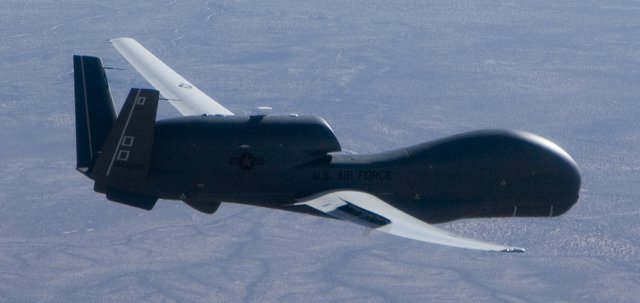The sale of as many as four Northrop Grumman Global Hawks to help improve South Korea’s reconnaissance capability may have stalled.
South Korea has raised concerns about the price of the Northrop Grumman RQ-4 Block 30I Global Hawk unmanned aircraft and could open a tender for a high-altitude, long-endurance (HALE) system.
An industry source said that the country’s Defense Acquisition Program Administration “has indicated that price is an issue”.
Seoul could issue a request for proposals for the requirement, but there is no timeframe for this. Earlier this year, sources indicated that the acquisition of four Global Hawks and a ground station would cost South Korea $850 million, with two aircraft to be delivered in 2015 and two in 2016.
Washington now provides the backbone of intelligence, surveillance and reconnaissance (ISR) activities aimed at observing activities in North Korea. It operates ageing Lockheed Martin U-2 surveillance aircraft and Block 30 Global Hawks in this role, but wants Seoul to assume greater responsibility.
The Block 30I Global Hawk is less capable than the USAF’s Block 30, as it lacks the latter’s communications intelligence and signals intelligence payloads.
Last week, South Korean media reported that cost concerns could jeopardise the planned Global Hawk deal. A Korea Herald report said that Seoul had budgeted just Korean won 450 billion ($387 million) for its HALE requirement, far short of the $850 million sources have cited.
At the Seoul air show in October, Northrop declined to comment on the $850 million figure. It said the ultimate cost will be determined by the US government, with any sale to be conducted under its Foreign Military Sales mechanism.
Another option South Korean media reports have mentioned is the AeroVironment Global Observer, a hydrogen-powered HALE aircraft being developed for the US Special Operations Command.
In September, US government officials said Washington decided to remove the Global Hawk from the Missile Technology Control Regime agreement in the case of South Korea. They did this on the basis that the aircraft is not a weapon, but rather an ISR platform.
South Korea was planning to buy at least one Global Hawk “to be able to have intelligence, surveillance and reconnaissance type assets to look into North Korea,” General Walter Sharp, then-commander of U.S. Forces in Korea, told the House Armed Services Committee in April.
The foreign sale of Global Hawks would offset programme reductions that the Pentagon made this year. Eleven of the planned 55 UAS in the Pentagon programme were cut because the estimated cost per aircraft this year has increased to $113.9 million from $90.8 million.
The Global Hawk disclosure came in language prohibiting retirement of Lockheed Martin Corp.’s manned U-2 spy plane, which is less expensive to operate but doesn’t have the same endurance or ability to make longer flights. Lawmakers directed the Air Force to delay the spy plane’s retirement until the Pentagon certifies Global Hawk operations and support costs.
The lawmakers said prematurely retiring the U-2 in the face of a stalled Global Hawk sale might result in an intelligence gap over North Korea.
The lawmakers also said they were concerned with a pending plan by U.S. Pacific Command that would result in fewer U.S.- controlled Global Hawks near Korea and more flying in other parts of Asia. This move might mean “substantially reducing collection on the peninsula,” lawmakers said.
Pentagon Korea affairs spokesman Lieutenant Colonel Todd Breasseale said Defense Department officials “as a matter of policy decline to comment on potential arms sales until they have been formally notified to Congress.”
Randy Belote, a spokesman for Falls Church, Virginia-based Northrop Grumman, said in an e-mail statement that, though no formal letter of agreement has been signed with South Korea, a potential Global Hawk program for as many as four aircraft is progressing.
“We continue to work with the U.S. Air Force and have not been notified of any changes,” he wrote. “We believe the Korea and U.S. governments remain committed to the Global Hawk programme.”
Retaining the U-2 aircraft, which flies as high as 70,000 feet, may be necessary because the Global Hawk’s picture-taking sensors “have substantially less range” than on the older spy plane, lawmakers wrote.
A South Korean sale would be the second foreign sale of the Global Hawk, with Germany the first.
Sources: Bloomberg Business Week, Flight Global

